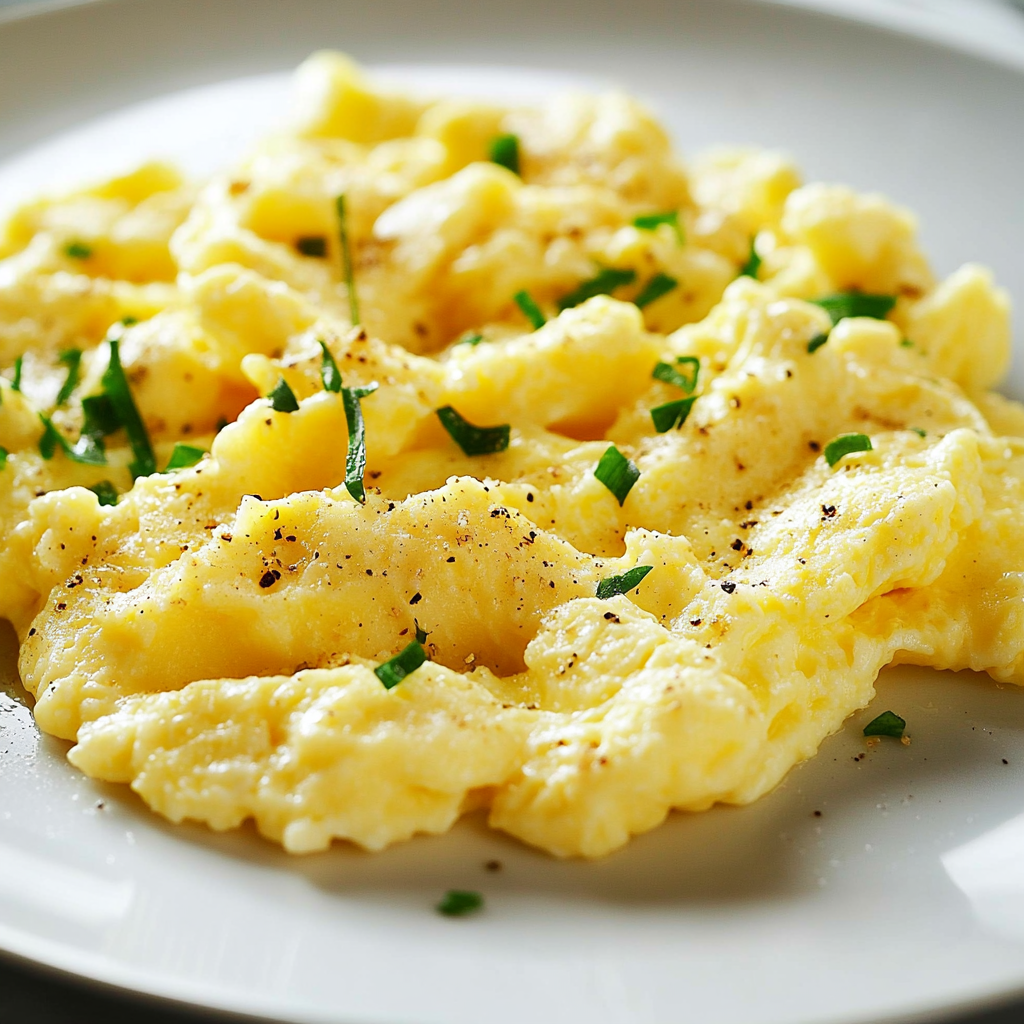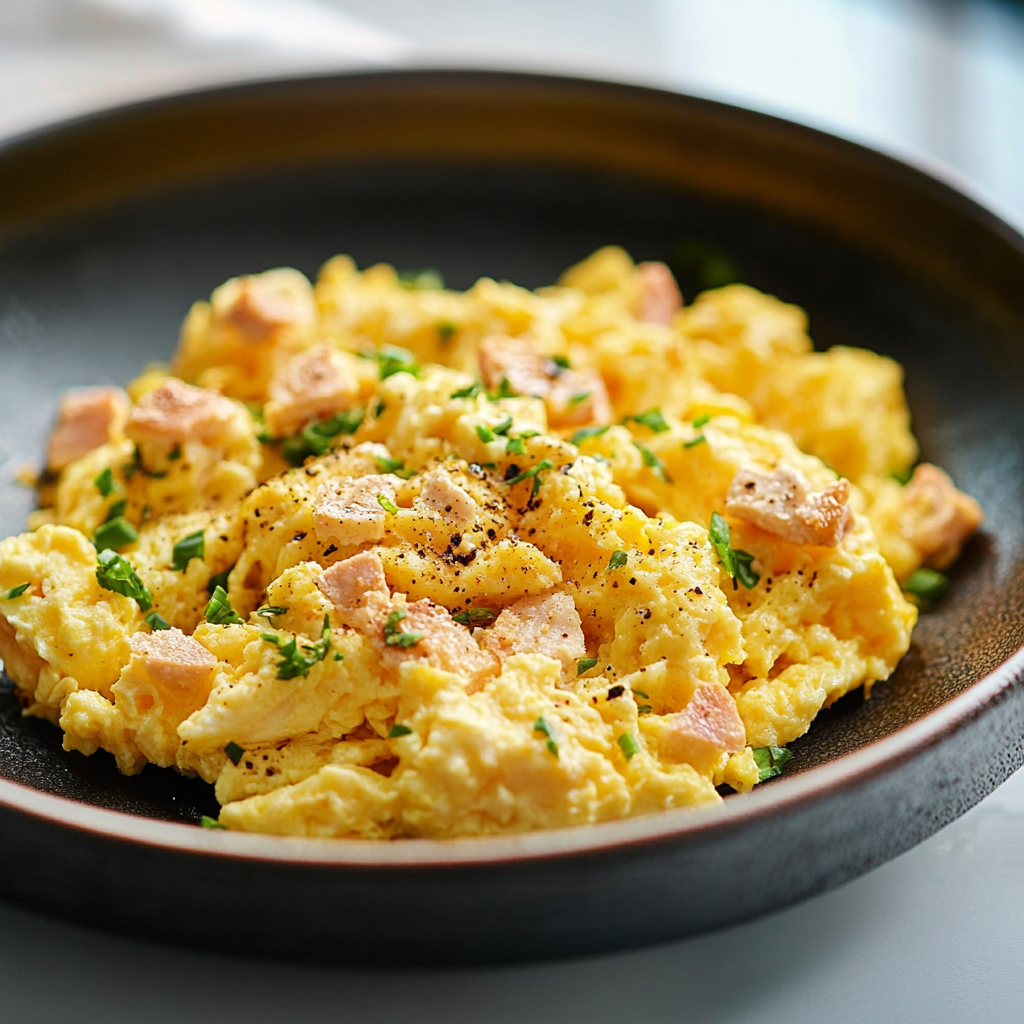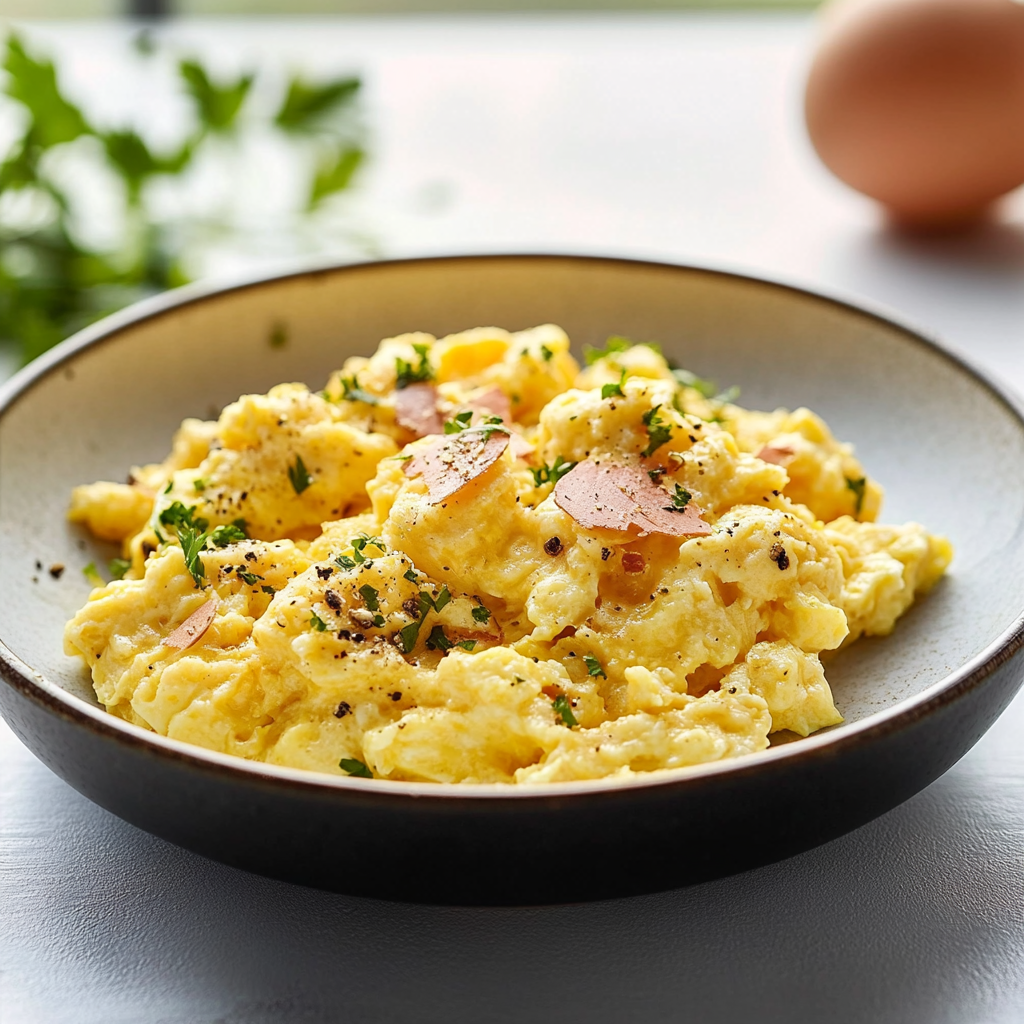Have you ever wondered how to achieve the perfect scramble in your scrambled eggs? The secret lies not only in the ingredients but also inthe technique. Imagine sitting down to a warm plate of fluffy scrambled eggs that melt in your mouth, bursting with flavor and creaminess. This dish is not just for breakfast; it’s a versatile delight that can elevate any meal.
Scrambled eggs hold a special place in my heart. I remember Sunday mornings spent in the kitchen with my family, where we would whip up a batch of these delightful eggs together. The aroma filled the air as they cooked gently on the stove, inviting everyone to gather around the table. Whether you’re preparing a quick breakfast before work or hosting a leisurely brunch with friends, these scrambled eggs will impress everyone at the table.
Why You’ll Love This Scrambled Eggs
- Quick and Easy: This recipe takes only minutes to prepare, making it perfect for busy mornings or last-minute meals.
- Customizable Flavor: You can easily add your favorite herbs, cheeses, or spices to create a personalized dish.
- Nutrient-Rich: Eggs are packed with protein and essential nutrients, making them a healthy choice for any meal.

Ingredients for Scrambled Eggs
Here’s what you’ll need to make this delicious dish:
- Fresh Eggs: Use large fresh eggs for the best flavor and texture; about two per person is ideal.
- Butter: A tablespoon of unsalted butter adds richness and helps prevent sticking while cooking.
- Salt: Adding salt enhances the overall flavor; adjust according to taste preferences.
- Pepper: Freshly cracked black pepper provides an aromatic kick; sprinkle it on just before serving.
The full ingredients list, including measurements, is provided in the recipe card directly below.
How to Make Scrambled Eggs
Follow these simple steps to prepare this delicious dish:
Step 1: Prepare Your Ingredients
Crack the desired number of eggs into a bowl. Whisk them together until fully combined; this should take about one minute.
Step 2: Heat the Pan
In a nonstick skillet over medium-low heat, melt one tablespoon of butter until it sizzles but does not brown.
Step 3: Cook the Eggs
Pour the whisked eggs into the pan. Allow them to sit undisturbed for about thirty seconds until they start to set.
Step 4: Stir Gently
Using a spatula, gently stir the edges toward the center while tilting the pan slightly to allow uncooked egg to flow outward. Repeat this process until most of the egg is cooked but still slightly runny.
Step 5: Finish Cooking
Remove from heat when they are still slightly undercooked; residual heat will finish cooking them. Season with salt and pepper.
Step 6: Serve Immediately
Transfer your fluffy scrambled eggs onto plates and enjoy while warm for optimal flavor.

Tips and Tricks
Here are some helpful tips to ensure the best results for your dish:
- Use Fresh Ingredients: Fresh eggs yield better flavor and texture than older ones.
- Control Your Heat: Cooking on low heat ensures even cooking without browning.
- Add Dairy for Creaminess: Incorporate cream or milk when whisking for extra richness.
Mistakes to avoid
- Overcooking the Eggs: One of the most common mistakes when making scrambled eggs is overcooking them. When you cook eggs for too long, they become dry and rubbery. To achieve that creamy texture, remove the eggs from the heat while they are still slightly runny. The residual heat will continue to cook them, resulting in perfectly fluffy scrambled eggs.
- Using Too High Heat: Cooking scrambled eggs over high heat can lead to burnt edges and uneven cooking. Instead, use medium-low heat to allow the eggs to cook slowly and evenly. This approach gives you better control and helps in achieving a smooth consistency without any brown spots.
- Neglecting to Whisk Properly: Skipping or rushing through the whisking process can lead to lumpy scrambled eggs. Be sure to whisk your eggs well before cooking, incorporating air into the mixture. This step not only helps in achieving a uniform texture but also enhances fluffiness, making your scrambled eggs light and airy.
- Not Seasoning Early: Many people forget to season their scrambled eggs until after they’ve cooked. However, adding salt before cooking allows it to permeate the eggs, enhancing their flavor. Aim to add salt during whisking or right before pouring the mixture into the pan for the best results.
Serving Suggestions
This Scrambled Eggs recipe is versatile and pairs wonderfully with:
- Toast: Enjoy your scrambled eggs on a slice of buttered toast for a classic breakfast experience. Whole grain or sourdough adds extra flavor and texture.
- Sautéed Vegetables: Add some color to your plate with sautéed spinach, tomatoes, or bell peppers. The combination enhances the nutritional value and adds delicious flavors.
- Cheese: Sprinkle shredded cheese like cheddar or feta over your scrambled eggs while they cook for a creamy and savory bite that elevates the dish.

FAQs
How do you make perfect scrambled eggs?
Making perfect scrambled eggs involves using fresh ingredients and careful cooking techniques. Start by whisking eggs in a bowl until fully combined. Season with salt and pepper to taste. Use low heat and a non-stick skillet for best results. Stir gently with a spatula as the eggs begin to set, allowing them to cook evenly without sticking. Remove from heat when they are slightly undercooked, as they will continue to cook from residual heat.
Can I add milk or cream to my scrambled eggs?
Yes, adding milk or cream can enhance the creaminess of your scrambled eggs. A tablespoon of milk per egg is a common ratio. Whisk it in with the eggs before cooking. However, if you prefer firmer and fluffier eggs, you might skip the dairy altogether for a richer texture.
What can I add to scrambled eggs for extra flavor?
You can add various ingredients to your scrambled eggs for enhanced flavor. Consider chopped herbs like chives or parsley, diced onions, or bell peppers. Adding cooked bacon or ham provides a savory touch, while spices like paprika or cumin offer unique flavor profiles that can transform this simple dish into something extraordinary.
How do you store leftover scrambled eggs?
Leftover scrambled eggs can be stored in an airtight container in the refrigerator for up to three days. When reheating, use low heat on the stove or microwave to avoid drying them out. You may want to add a splash of milk while reheating to restore moisture and creaminess.
Conclusion for Scrambled Eggs
In conclusion, mastering scrambled eggs is an essential skill for every home cook. By following simple steps and using fresh ingredients, you can create fluffy and flavorful scrambled eggs that appeal to everyone at the table. Remember that serving suggestions like toast, sautéed vegetables, and cheese can elevate your dish even further. Don’t hesitate to experiment with flavors by adding herbs or spices until you find your perfect combination. With these tips in mind, you’ll enjoy delicious scrambled eggs any day of the week!

